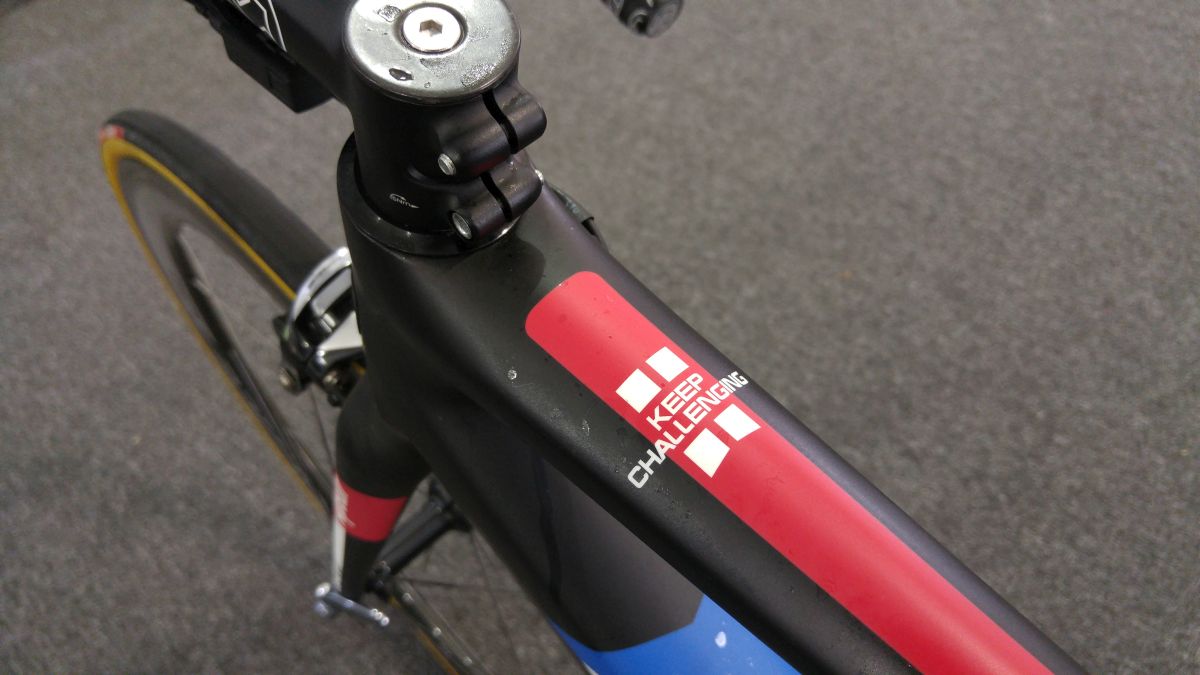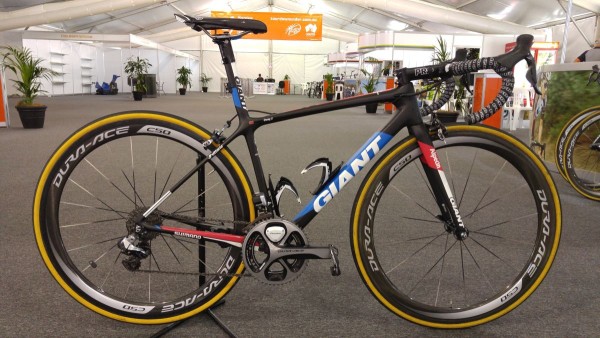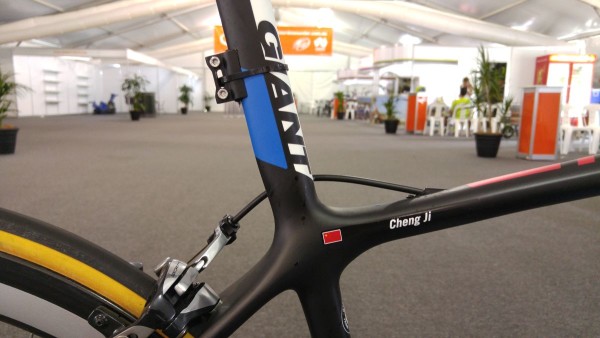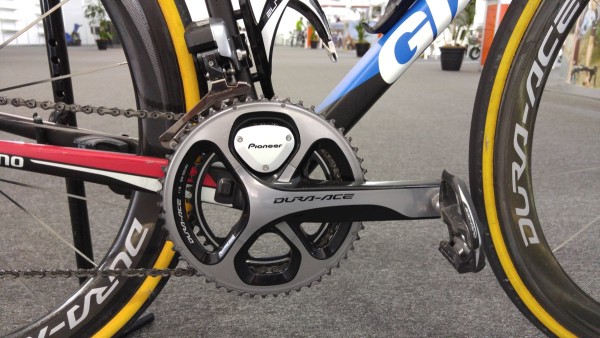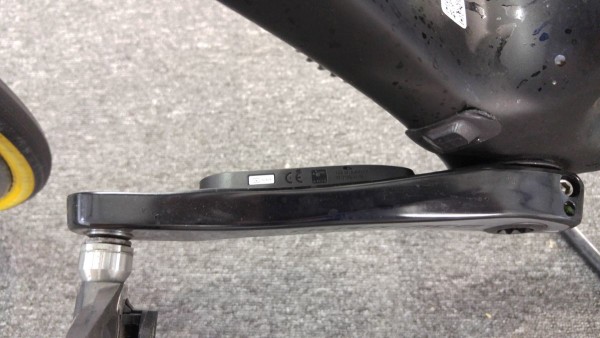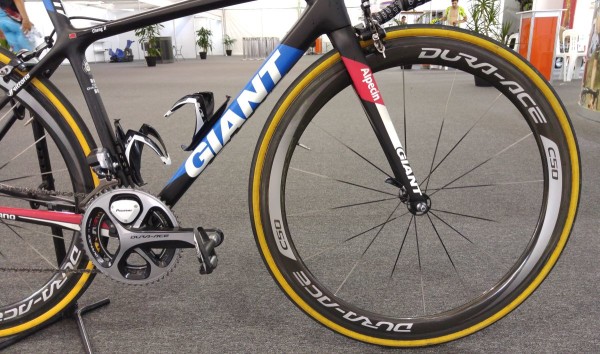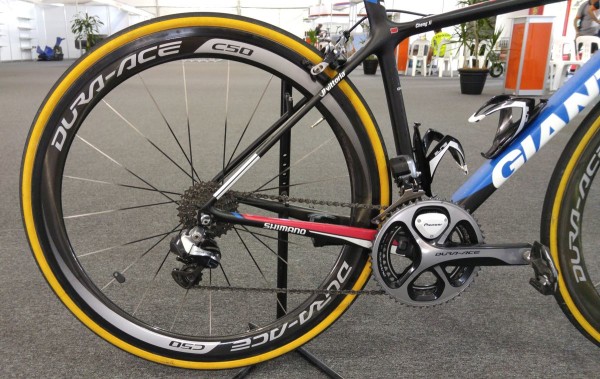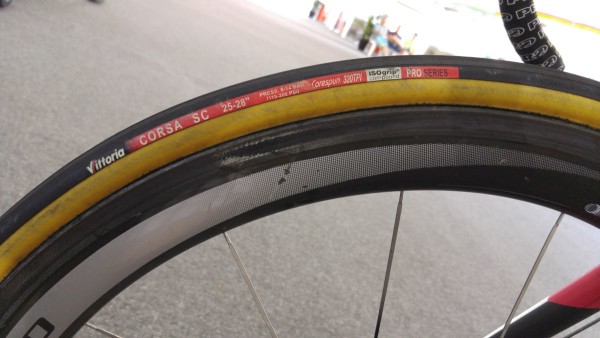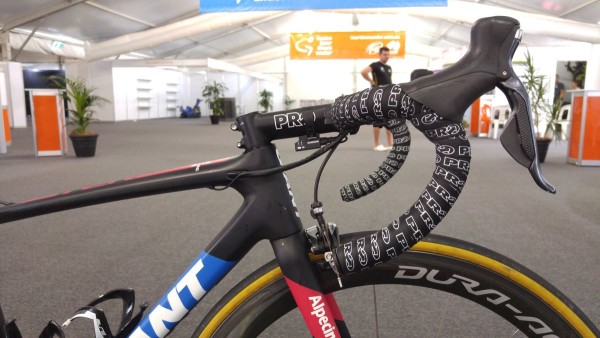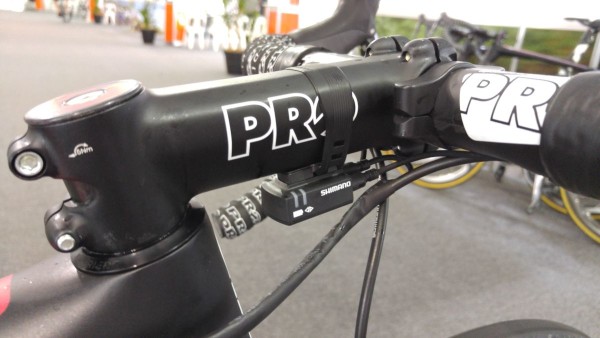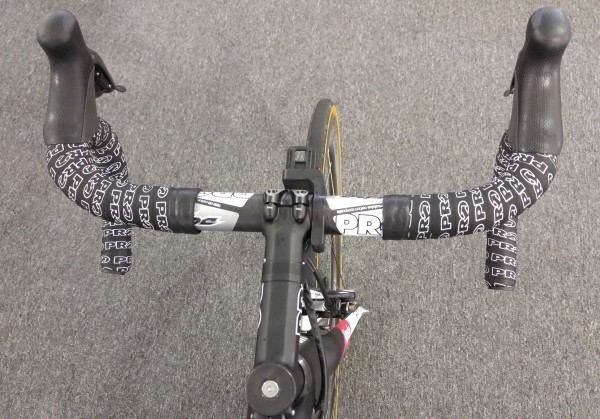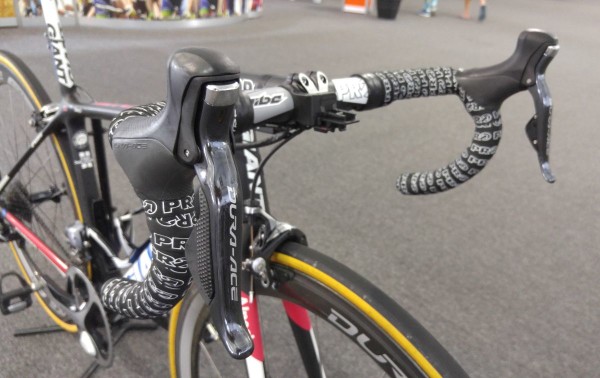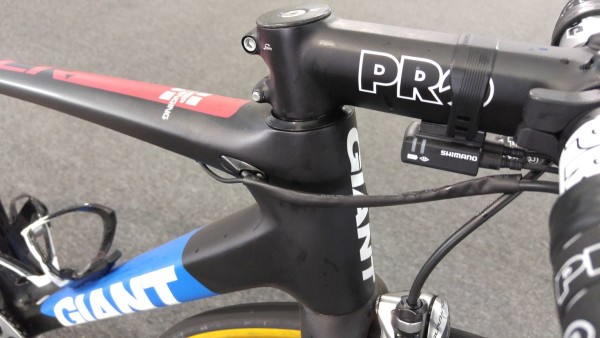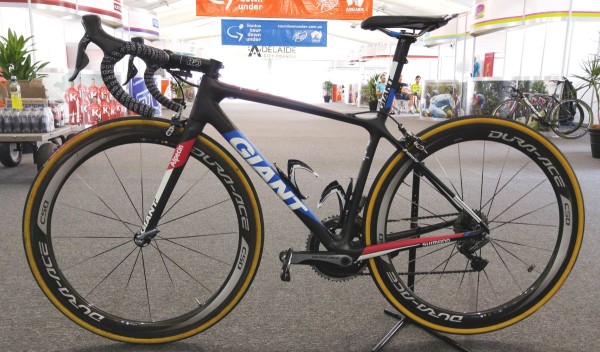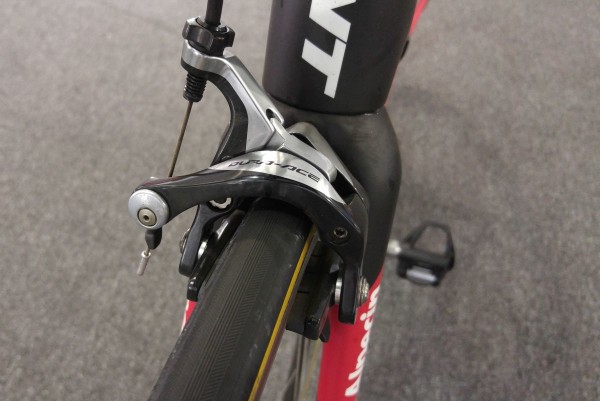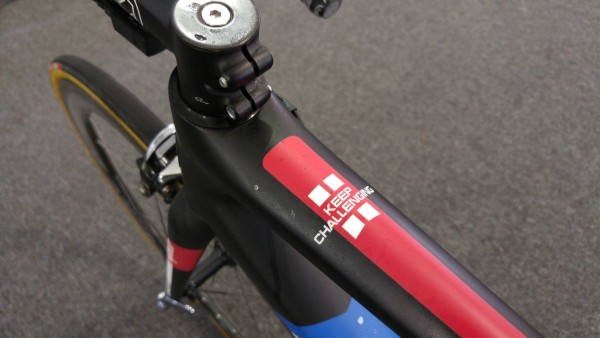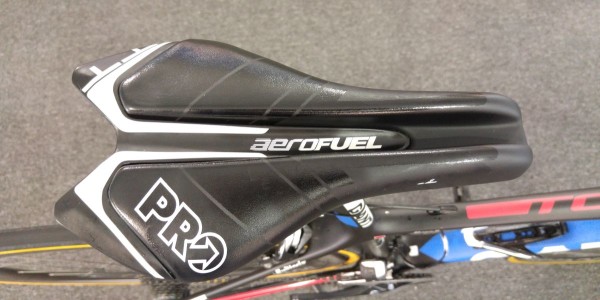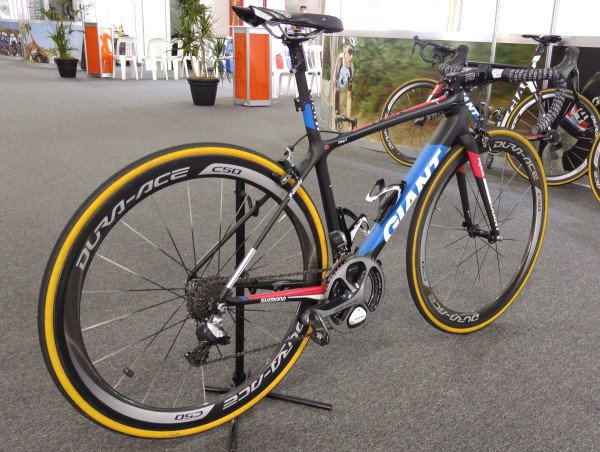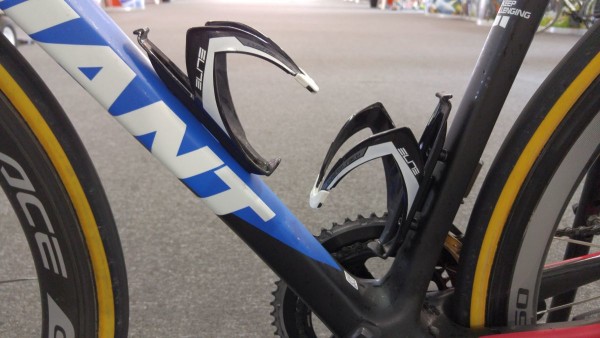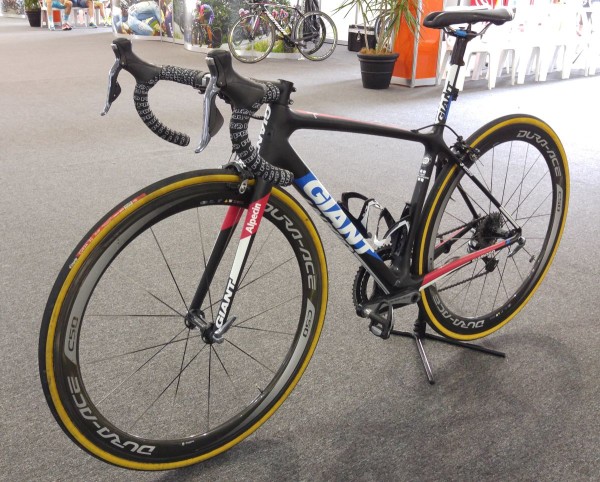Team Giant Alpecin is a German professional road racing team. Founded in 2005, the team’s aggressive riding in races like Paris-Nice saw them receive a wild card entry to the 2009 Tour de France under the name Skil-Shimano. In April of 2012, the team partnered with Argos, an independent oil company in the Netherlands to become Argos-Shimano. The team became part of the World Tour in 2013, forming the basis for today’s iteration, Giant Alpecin. Alpecin is a well known German manufacturer of shampoo.
Shimano has been a constant factor in the history of the team through it’s various forms, with Giant Bicycles coming on board as a sponsor in 2014. Team riders can choose from the Giant Propel aero bike, or the TCR Advanced SL as featured here. This 2016 TCR Advanced SL is ridden by Giant Alpecin’s Ji Cheng, a Chinese born professional cyclist. Ji was the first rider from his nation to complete a Grand Tour, when he finished the 2012 Vuelta a España. Best known by his nickname of “Breakaway Killer”, Ji is a valuable rider on the Giant Alpecin team. Click to read more about Ji Cheng’s TCR Advanced SL…
Ji Cheng measures 5’10” tall, but like so many professional riders he chooses a smaller frame than is recommended by the manufacturer – Giant Bicycles recommend of a size Medium frame for Ji, but he rides a Small.
All of the team’s bikes are fitted with Shimano’s Dura-Ace Di2 electronic shifting system and Pioneer’s crank based power measurement system.
Ji Cheng had just returned from a training ride when these photos were taken, but the Pioneer cadence magnet pickup and left crank measuring device can be easily seen.
As a Shimano sponsored team, it is logical that Giant Alpecin rides the company’s wheelsets.
Team riders can choose from any of the C series Shimano tubular wheels, but the C50 was the universal choice among team members at the 2016 Tour Down Under.
Vittoria tires aren’t as popular as they once were in the professional peloton, but like most other teams, team riders choose the extra comfort of the 25mm width.
Ji Cheng’s position is totally slammed, and his handlebars are tilted a little more skyward than we are used to seeing. Ji’s position is long and low, but the raised brake hoods indicate an allowance is made for some comfort.
Shimano’s Pro Vibe series stem and handlebars feature on most of Giant Alpecin’s team bikes.
Like other team bikes at the 2016 Tour Down Under, Giant Alpecin’s mechanics stick with the external Di2 Junction A box, and use heat shrink tubing to guide the wiring along the rear brake housing until it enters the frame behind the headtube. Simplicity and accessibility are key to keeping mechanics happy when they are on the road.
Brake and derailleur cables are fully internalized while the Dura-Ace 9000 series brakes are kept external.
The team’s motto – Keep Challenging.
Ji Cheng uses Shimano’s Pro brand Aerofuel TT saddle, typically reserved for time trial use. At 295 grams the Aerofuel isn’t light, but titanium rails keep the weight down a little and an anti-slip cover helps keep Ji positioned when he is on the front, chasing down breakaway riders.
Bottles are held in place by Elite’s Custom Race cages.
Ji Cheng finished the 2016 Tour Down Under in 130th place overall, 48:16 down on the overall winner, Simon Gerrans. Considering the low winter temperatures in Ji’s home province, Heilongjiang, his fitness is not expected to be on top form at the time of the Tour Down Under. There is also the distinct possibility Ji Cheng may retire at the end of the 2016 season, to focus on a television career, helping to promote cycling in China. Whatever lay in store for Ji Cheng’s in the future, we wish him luck!
Photos and article by Gravel Cyclist. Jayson O’Mahoney is the Gravel Cyclist: A website about the Gravel Cycling Experience.
